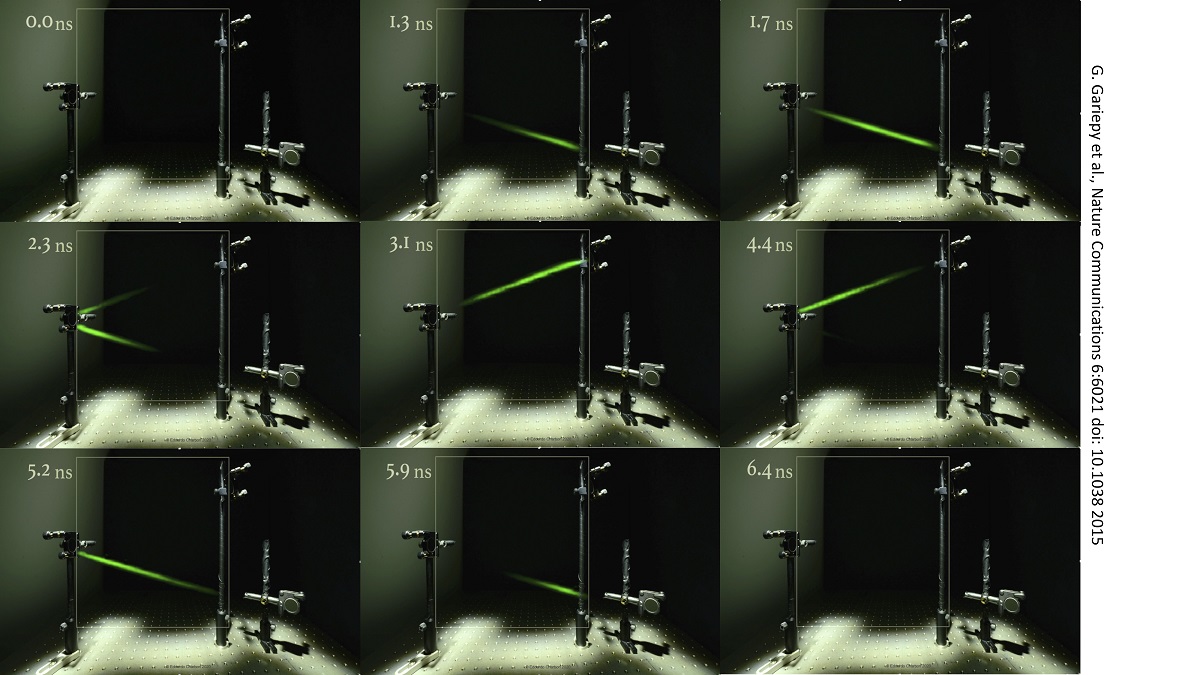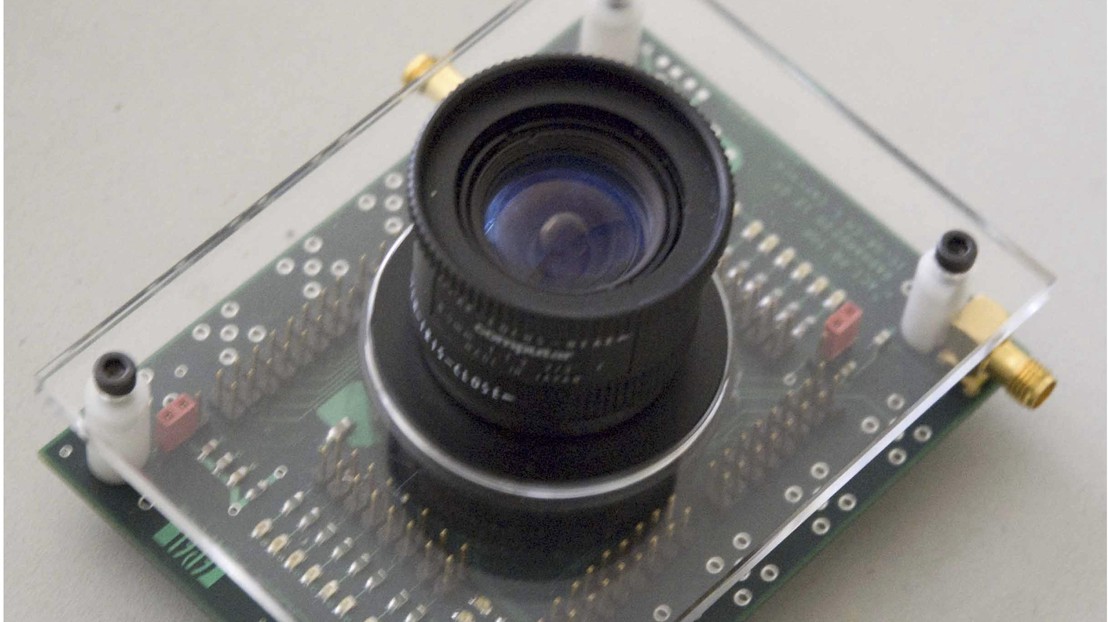17.04.20
“It’s something I’d been dreaming of for a long time,” says Edoardo Charbon, an EPFL professor and head of the Advanced Quantum Architecture Laboratory in EPFL’s School of Engineering. “MegaX is the culmination of over 15 years of research on single photon avalanche diodes (SPADs), which are photodetectors used in next-generation image-sensor technology.” And Charbon has good reason to be proud, since he and his research team have developed the world’s first million-pixel camera. Their findings have just been published in Optica.
A shooting star
What makes their camera different is that it can capture and count the very smallest form of light particle: the photon. Photons are invisible to the human eye; we can see only continuous beams of photons, like those used in laser pointers. But MegaX can film the trajectories of individual photons in rays of light. When shown in video form, they look like shooting stars. “We had to slow the film speed by a factor of 300 million to see individual photons move,” says Charbon.

But there’s more to it. MegaX is extremely fast and can take up to 24,000 images per second; in comparison, movies are filmed at 24 images per second. MegaX also has three other important advantages: it has a very large dynamic range, can produce 3D representations and can perform in-depth segmentations of those representations – all at the same time. “Thanks to its high resolution and advanced detection capabilities,” says Charbon, “MegaX could be used in applications that incorporate virtual and augmented reality.”
Reconstructing 3D images
So how exactly does the camera work? “It captures individual photons and converts them into electric signals that are stored in a digital memory system,” says Charbon. The process of capturing photons takes just one nanosecond, or 1x10-9 seconds. The camera can also detect exactly when a photon hits a sensor and measure how much time it took for the photon to travel between the object that emitted it and the camera, and therefore calculate that distance. “That time is called the time-of-flight,” explains Charbon. “The ability to calculate it, and to capture a million pixels simultaneously, is what lets the camera generate 3D images very quickly.”
Both light and dark
We can see how striking the effect is when we look at an example image, taken of the view from an office. With standard cameras, very light and very dark areas in a picture are saturated – our eyes see only black and white. But with MegaX, we can see both light and dark objects equally well. “MegaX lets you increase the dynamic range substantially, far beyond what you can do with a high-definition camera,” says Charbon.

So will we soon be able to go out and buy a MegaX? “Not at this point,” says Charbon. The main obstacle is pixel size. A regular camera has a pixel size of 0.9 µm, but the pixel size in MegaX is ten times larger, at 9 µm. “Our team is already working on a next-generation MegaX with a pixel size of 2.2 µm” adds Charbon. “Our goal isn’t necessarily to make MegaX work like a conventional camera, but rather to create a 4D camera” – the three standard dimensions plus time – “with as many pixels as possible, in order to achieve a higher resolution.”
Funding
Swiss National Science Foundation (Grant#: 166289) et Canon Inc.
References
A megapixel time-gated SPAD image sensor for 2D and 3D imaging applications
DOI 10.1364/OPTICA.386574
Author: Valérie Geneux
Source: EPFL















